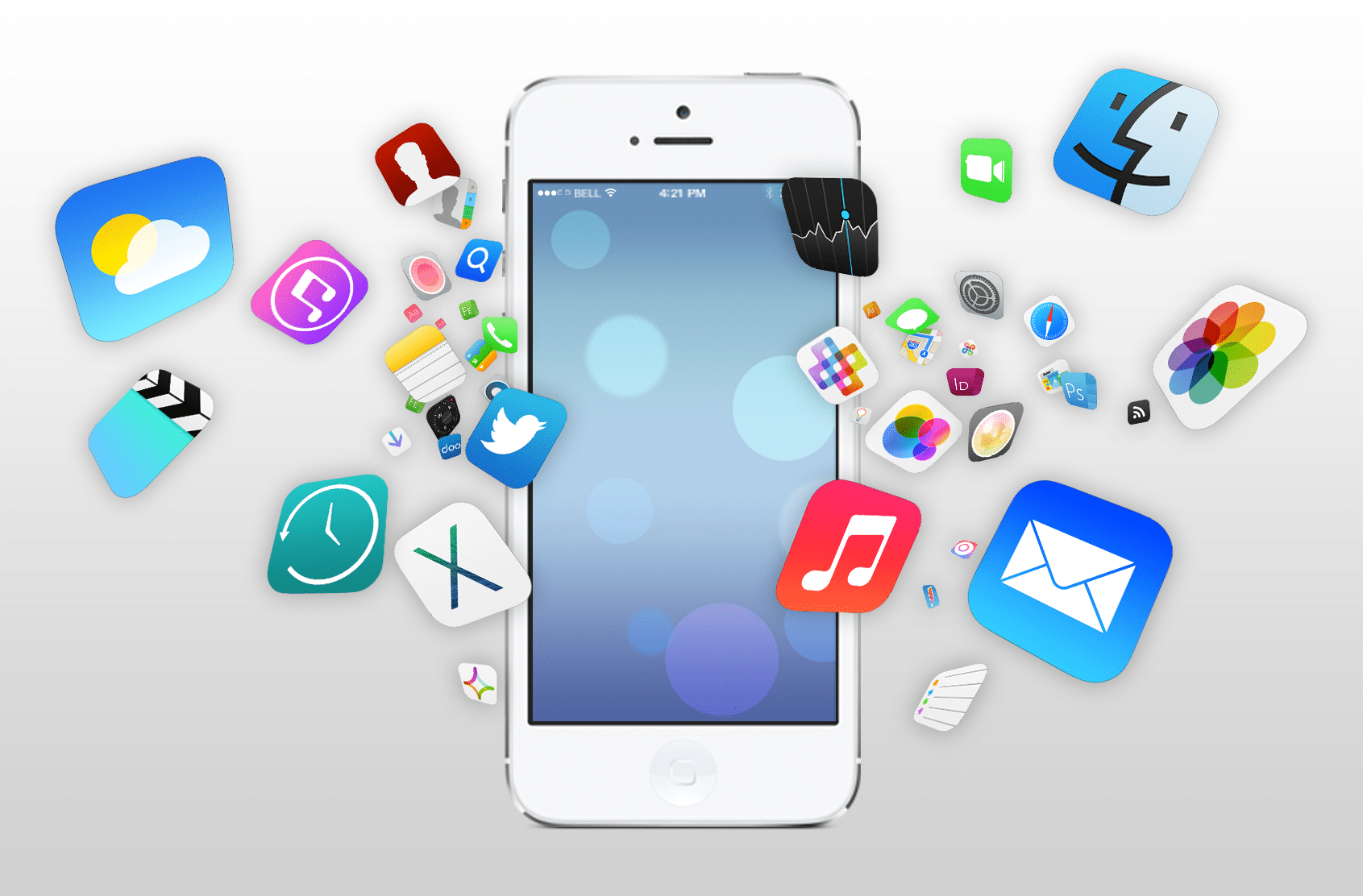In today’s digitally connected world, iOS app development is akin to an art form, blending creativity and technical prowess to craft seamless and engaging mobile experiences. At the heart of this endeavor are leading iPhone app development companies, which play a pivotal role in shaping the iOS app ecosystem. In this article, we delve into the artistry of iOS app development, uncovering insights from a prominent iPhone app development company.
Understanding the Essence of iOS App Development
Creating an iOS app is much more than coding; it’s about understanding the essence of Apple’s ecosystem and the preferences of iOS users. A leading iPhone app development company approaches this craft with a set of core principles:
1. User-Centric Design:
- User Experience (UX) First: The user experience is paramount. App developers focus on creating interfaces that are intuitive, visually appealing, and efficient.
- User Interface (UI) Excellence: Attention to detail in UI design ensures that every element is meticulously crafted, from icons to color schemes, for a cohesive and aesthetically pleasing app.
2. Seamless Functionality:
- Performance Optimization: To ensure the app runs smoothly, developers optimize performance by minimizing load times and reducing resource consumption.
- Reliability: Users rely on iOS apps for various tasks, so stability and reliability are non-negotiable. Rigorous testing and quality assurance are essential.
3. Platform Integration:
- Leveraging iOS Features: iOS offers a range of unique features, from Siri integration to ARKit. Leading development companies embrace these features to enhance the app’s capabilities.
- Cross-Device Compatibility: Developing apps that seamlessly transition between iPhones, iPads, and other Apple devices is a hallmark of expertise.
4. Security and Privacy:
- Data Protection: In the age of data breaches, safeguarding user data is paramount. Stringent security measures, including encryption and authentication, are a top priority.
- Privacy Compliance: Staying compliant with Apple’s privacy guidelines and regulations ensures that user data is handled responsibly.
The Creative Process of App Development
The artistry of iOS app development begins with a creative spark and evolves into a structured process. Let’s explore the steps involved:
1. Conceptualization:
- Idea Generation: It all starts with an idea—a solution to a problem or a novel concept. Brainstorming sessions are held to generate innovative app concepts.
- Market Research: Understanding the target audience and the competitive landscape is crucial. This phase helps refine the app’s concept and features.
2. Design and Prototyping:
- User-Centric Design: Designers craft wireframes and prototypes, considering user needs, preferences, and the overall look and feel of the app.
- Iterative Design: Multiple iterations are made to refine the app’s design until it aligns perfectly with the desired user experience.
3. Development:
- Coding: Developers write the code, turning the design and concept into a functional app. They follow best practices and coding standards to ensure efficiency and maintainability.
- Testing: Rigorous testing is conducted to identify and rectify bugs and issues. Quality assurance ensures the app meets the highest standards.
4. Deployment:
- App Store Submission: Preparing the app for submission to the App Store involves adhering to Apple’s guidelines and requirements.
- App Store Optimization (ASO): Strategies are implemented to improve the app’s discoverability, including keyword optimization, compelling descriptions, and appealing visuals.
5. Post-Launch and Maintenance:
- Feedback Loop: The app’s performance and user feedback are continuously monitored. Updates and improvements are made based on this feedback.
- Maintenance: Keeping the app up to date with the latest iOS versions, security patches, and bug fixes is an ongoing process.
The Role of Innovation
Innovation is the driving force behind the evolution of iOS app development. Leading iPhone app development companies constantly push the boundaries of what’s possible. Here are some areas where innovation shines:
1. Augmented Reality (AR):
- AR Apps: Innovators are creating AR apps that blend the digital and physical worlds, offering immersive experiences for users.
- Retail and Gaming: AR is transforming industries like retail, allowing customers to visualize products, and gaming, creating interactive and engaging gameplay.
2. Artificial Intelligence (AI):
- Personalization: AI-powered apps provide highly personalized experiences, from tailored content recommendations to predictive analytics.
- Virtual Assistants: Integration with virtual assistants like Siri enhances user convenience and accessibility.
3. Internet of Things (IoT):
- Smart Home Control: Apps are emerging as central hubs for controlling IoT devices in smart homes, offering convenience and automation.
- Health and Wellness: IoT integration in healthcare apps allows users to monitor their health and fitness with wearable devices.
4. Blockchain and Cryptocurrency:
- Secure Transactions: Innovations in blockchain technology are enabling secure and transparent financial transactions within apps.
- Digital Wallets: Cryptocurrency wallets and trading apps are becoming more user-friendly and accessible.
Case Study: Unleashing Creativity with AR
One of the most exciting areas of innovation in iOS app development is augmented reality (AR). A leading iPhone app development company recently showcased its creativity in this realm by developing an AR app for a furniture retailer.
Concept:
The concept was to create an AR app that allowed users to virtually place furniture items in their homes before making a purchase, providing a highly immersive and personalized shopping experience.
Design:
Designers crafted a visually stunning and intuitive interface that seamlessly integrated AR technology. Users could browse through the store’s catalog, select furniture pieces, and place them in their physical surroundings using their iPhone or iPad.
Development:
Developers leveraged Apple’s ARKit to build the app, ensuring a smooth and realistic AR experience. The app used advanced algorithms to accurately position furniture in various room settings.
User Experience:
The result was an app that not only provided a unique shopping experience but also solved a common consumer pain point: uncertainty about how furniture would fit and look in their homes.
Impact:
The AR app not only boosted the retailer’s sales but also garnered attention and praise in the industry. It showcased the potential of AR to revolutionize the way consumers shop for furniture and other products.
Challenges in iOS App Development
While the art of iOS app development offers tremendous opportunities for creativity and innovation, it also comes with its share of challenges:
1. Evolving Technologies: Keeping up with the rapid evolution of iOS technologies and features requires continuous learning and adaptation.
2. Fragmentation: Developing apps that work seamlessly across various iOS devices and screen sizes can be complex.
3. Security: Ensuring data security and protecting user privacy are paramount, and any breaches can have severe consequences.
4. App Discovery: With millions of apps on the App Store, standing out and getting noticed by users is a challenge.
5. User Expectations: Meeting and exceeding user expectations for usability, performance, and functionality is an ongoing pursuit.
Conclusion
The art of iOS app development is a blend of technical expertise, creative vision, and innovation. Leading iPhone app development companies not only create apps that meet the highest standards of design and functionality but also push the boundaries of what’s possible in the iOS ecosystem. As technology continues to evolve, the artistry of iOS app development will remain at the forefront of providing users with captivating and transformative mobile experiences.




